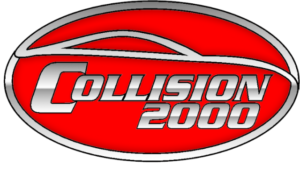Blog
You wouldn’t guess it right off, but one of the most interesting stories told as a result of the Industrial Revolution and of the last 100 years in general is the history of automotive paint. From accidents to war, there are many elements that play into how car paint has evolved through the years. Today, we just think about it in terms of auto body repair but there’s so much more to it.
Here are some facts to keep you busy for a while:
- Prior to 1924, vehicles were painted using the same carriage-builder method that had been used for decades. Particularly when it came to the old Studebakers, it took 52 days to paint a carriage by hand, thanks to the many steps involved as well as the slow drying times. Even still, the paint didn’t last long – maybe a few years if the owner was lucky.
- In the 1920s, several paint manufacturers developed nitrocellulose lacquers, but DuPont led the pack in nitrate movie-film manufacturing at the time. Just like an accident led to the invention of chewing gum, an accident also led to the discovery of a new kind of paint. In 1921, a worker at the DuPont film plant left a drum of gun cotton outside on a hot day. When they finally opened it, they saw a clear liquid rather than cotton. This liquid became the base for nitrocellulose lacquer, which was the top automotive finish for the next five decades.
- The 1924, the Oakland was the first car to be spray painted.
- In the 1930s, both nitrocellulose lacquer and alkyd enamel were used in automobile production, ranging from black enameled fenders to colored lacquer bodies, used by the likes of Chrysler, Ford and Studebaker.
- It was the Europeans who developed the more durable basecoat technology with acrylic urethane clear topcoats, far superior at the time to American paints.
- In the late 1970s and early 1980s, the Europeans began infiltrating the U.S. market, forcing change upon American manufacturers and collision repairers who then had to scramble to figure out how an acrylic urethane would work. From dieback to mottling, many challenges presented themselves.
- American paint manufacturers eventually figured it out and caught up but it took many years as the underdog to get there.
- Environmental regulations changed paint technology, as new words entered the industry’s vocabulary such as volatile organic compounds (VOCs), transfer efficiency, catalyzed primers and federal air standards.
- Shops had to meet strict air-quality standards in terms of emissions, but this pitted paint manufacturers against equipment manufacturers as they both looked at the other to comply with new regulations.
- Paint gun manufacturers were also getting in on the game as well as collision repairers.
- Improvements in clears, flakes, basecoats, reflectants, pearls, pigments, effects and even ground glass continue to add progress to the industry.

